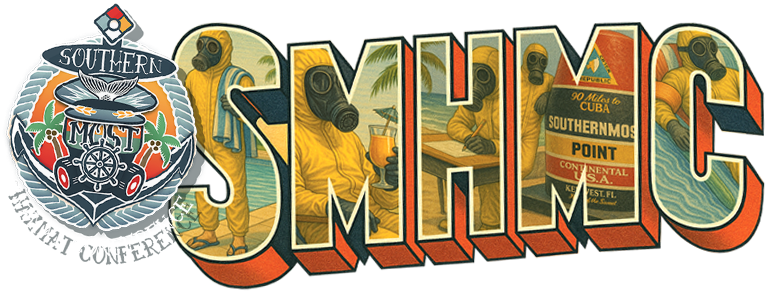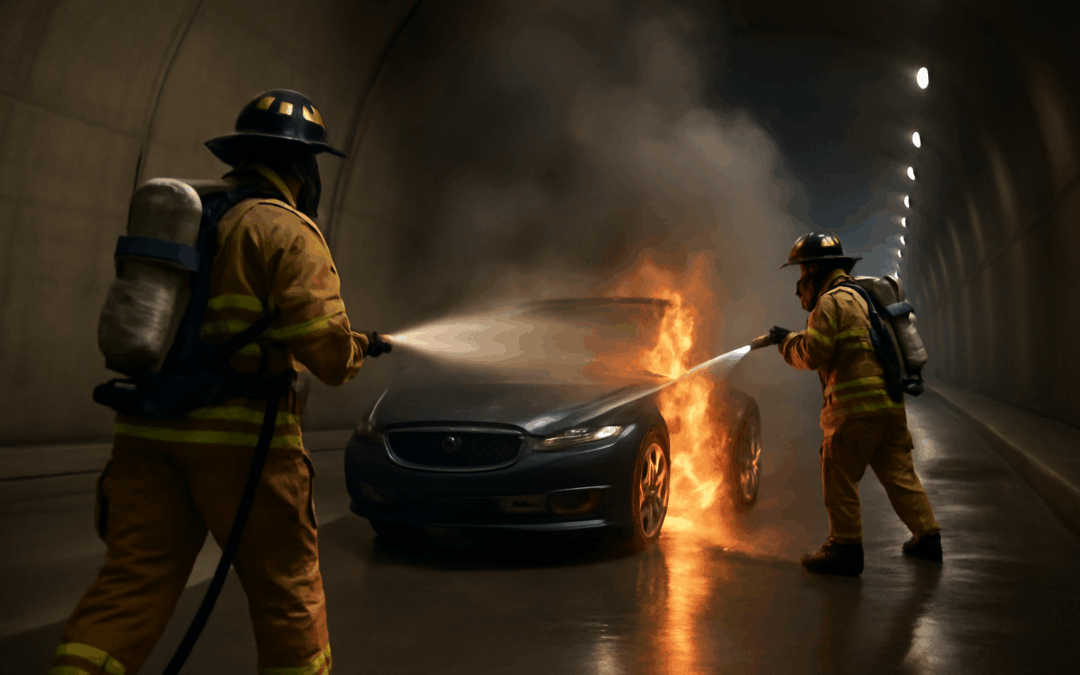Fighting EV Fires in Tunnels: What Firefighters Need to Know
By the time I sat down with Bobby Salvesen and Mike Monaco, they were already prepping for another whirlwind week of conferences and after-action reports. But that didn’t stop them from bringing some serious knowledge about one of today’s most pressing fire service challenges: how to handle an electric vehicle (EV) fire in a tunnel.
As Mike put it, “It’s great to ask questions on social media ahead of time, but if you’re arriving on scene, that’s too late. You need to already know what to do.”
The Challenge: EV Fires in Confined Spaces
The first thing Bobby and Mike stressed was that fires in tunnels aren’t your average roadside vehicle fires. You’re dealing with limited ventilation, difficult access, and possibly long stretches of tunnel between you and the car.
When I asked them what sets tunnel fires apart, Bobby hit on something most people don’t even consider: ventilation isn’t guaranteed. “A lot of tunnels rely on piston ventilation, which is the air pushed by moving cars,” Bobby explained. “But once traffic stops because of the fire, you lose that airflow.”
Even the mechanical systems that do exist – like massive vertical exhaust fans or wall-mounted side fans using Bernoulli’s principle – have their limits. And without good airflow, you get heavy smoke, trapped heat, and zero visibility.
As Mike added, “We’re talking about superheated air being trapped. If the heat goes up, you risk damaging the tunnel structure. If it goes down, you’re burning the asphalt.”
And that’s just the fire environment. We hadn’t even gotten to the EV part yet.
What Makes EV Fires Different?
The short answer? Everything.
EV fires are driven by lithium-ion battery chemistry, and they don’t behave like traditional fires. They burn hotter, longer, and they don’t care what you spray on them.
“You’re not in control,” Bobby told me. “The battery is going to do whatever it wants.”
Water often doesn’t extinguish EV fires. That’s because battery packs are sealed to keep out rain and debris – which also keeps out your hose line. Until that compartment breaches, your water might not even be reaching the actual fire.
And that’s where the idea of Delta T comes in.
Delta T: Timing is Everything
Bobby introduced the idea of “Delta T” – essentially, the change in time it takes for heat to be released.
Think of it like this: a candle and a stick of dynamite might contain the same amount of energy. What matters is how fast that energy is released. With an EV battery, if you can stretch out that time – slow the burn – you reduce the chance of violent thermal runaway.
Sometimes, this means letting the fire burn – at least for a while – so that the battery compartment breaches and the heat release slows. It’s not about being passive. It’s about choosing your moment to act.
“Most of the time, the fire puts itself out after 30 to 40 minutes,” said Mike. “It’s better than spending 60,000 gallons of water and taking a truck out of service for 15 hours.”
But in other situations, speeding up Delta T might be the better choice – and that’s where new tools come in.
The Blanket, the Cobra, and Creative Solutions
Let’s talk about options.
Fire Blankets
You’ve probably seen these on YouTube or in fire service demos. Heavy-duty fire blankets cover the car and trap the heat inside. The goal? Focus the thermal energy to accelerate battery failure and shorten burn time – while containing the spread.
Bobby admitted he was skeptical at first. “I thought it was operator error. But after seeing it used correctly, I’m more impressed.”
It’s not perfect. But it’s a tool – and knowing when to use it is key.
Cold Cut Cobra
This one sounds like something out of a sci-fi movie, but it’s real. The Cold Cut Cobra is a European tool that uses ultra-high-pressure water mixed with abrasive to literally cut through the EV battery compartment and inject water directly into the source of the fire.
Mike and Bobby saw it demoed in San Diego, and their verdict?
“At first, we were like, this is dumb,” Bobby laughed. “Twenty minutes later? We were saying, this could be the solution.”
Several U.S. departments – like FDNY and San Diego – are testing it now.
Creative Use of Everyday Gear
No fancy tools? No problem – if you think creatively.
“You have a fire truck with a tow hitch, right?” Bobby said. “Tie a hose around the car’s frame, hook it to your truck, and pull it out. That’s a tow truck.”
Sometimes the safest option is removing the car from the tunnel or parking garage entirely – especially if you’re worried about structural damage.
As Mike reminded me, “There are no rules in fight club. You do what you gotta do.”
What About Water?
Despite all this, don’t leave the hose at the station.
While water might not extinguish the battery fire itself, it can be crucial for:
- Cooling surrounding vehicles
- Protecting tunnel infrastructure
- Creating defensive lines to stop spread
In some cases, it’s even worth flowing water under the car, especially in parking garages, to protect structural rebar from spalling.
Practical Takeaways for Firefighters
Here’s the bottom line:
- Know the environment: Understand ventilation systems and layout before an incident occurs.
- Respect the heat: Structural damage from heat build-up is a serious risk.
- Rethink your attack: You can’t fight an EV fire like a gasoline one.
- Use water strategically: Sometimes it’s for exposure protection, not suppression.
- Embrace new tools: From blankets to cutting jets, the future is here.
- Be ready to adapt: You’re not fighting the car; you’re managing the outcome.
As Mike put it: “You’re not just spraying water anymore. You’re doing triage on the whole environment.”
Final Thoughts
This conversation left me with a clear takeaway: fighting EV fires in tunnels isn’t just hard – it’s a whole new game. You’re juggling fire science, ventilation theory, structural integrity, and evolving technology. And the only way to win is to stay informed, stay creative, and never get too comfortable.
I’d love to hear from you: Has your department handled an EV fire yet? What tools and strategies have worked for you?
Let’s keep this conversation going. Drop your comments below – and if you found this helpful, consider sharing it with your crew or subscribing to the podcast for more in-depth, real-talk hazmat content.



EV fires are thermal runaway, not combustion. TR does not need oxygen, a blanket only contains heat, or better used to prevent nearby vehicles from combusting. Newer road tunnels use various types of mechanical ventilation. Even after TR is slowed enough to move vehicle, rolling wheels energizes system ie more TR. FF safety is critical as TR produces highly toxic and sometimes explosive gases.